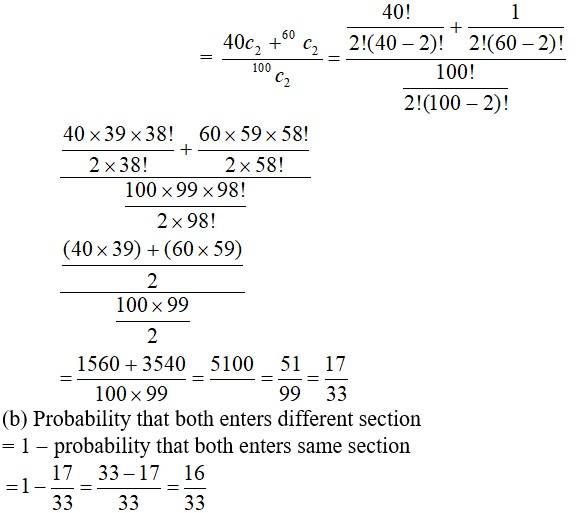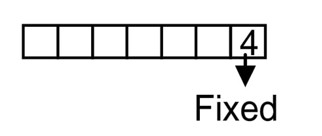49. Out of 100 students, two sections of 40 and 60 are formed. If you and your friendare among the 100 students, what is the probability that
(a) You both enter the same section?
(b) You both enter the different sections?
49. Out of 100 students, two sections of 40 and 60 are formed. If you and your friendare among the 100 students, what is the probability that
(a) You both enter the same section?
(b) You both enter the different sections?
-
1 Answer
-
49. Here, out of 100 students, first section has 40 students and the rest I e, 60 students enters in second section.
As me and my friend are among the 100 students.
The no. of ways of selecting 2 students from the 100 students
= 100C2
(a) When both enters first section if 2 of us are among the 40 students that are to be selected. Similarly, if both enters second section among the 60 students for that section.
(if 2 of us)
Hence, no. of ways of selecting both in same section = 40C2 + 60C2
Probability that both of us are in same section

Similar Questions for you
3, 4, 5, 5
In remaining six places you have to arrange
3, 4, 5,5
So no. of ways
Total no. of seven digits nos. =
Hence Req. prob.

f (x) = x? – 4x + 1 = 0
f' (x) = 4x³ – 4
= 4 (x–1) (x²+1+x)
=> Two solution
Let z be equal to (x + iy)
(x + iy) + (x – iy) = (x + iy)2 (i + 1)
Equating the real & in eg part.
(i) & (ii)
4xy = -2x Þ x = 0 or y =
(for x = 0, y = 0)
For y =
x2
x =
=
of
=
When
gives c = 1
So
sum of all solutions =
Hence k = 42
Each element of ordered pair (i, j) is either present in A or in B.
So, A + B = Sum of all elements of all ordered pairs {i, j} for and
= 20 (1 + 2 + 3 + … + 10) = 1100
Taking an Exam? Selecting a College?
Get authentic answers from experts, students and alumni that you won't find anywhere else
Sign Up on ShikshaOn Shiksha, get access to
- 65k Colleges
- 1.2k Exams
- 679k Reviews
- 1800k Answers
